Placement Prediction Using Machine Learning
The application of machine learning has grown in popularity in today's fast-paced society as technology has permeated every aspect of our lives. Placement prediction is one of the numerous uses of machine learning. Using machine learning algorithms, placement prediction determines the likelihood that a student will be hired by a firm based on a variety of criteria, including academic achievement, skill set, and prior job experience. Working of Placement Prediction Using Machine Learning
A statistical method for determining the relationship between two or more variables is regression analysis. Regression analysis is used in placement prediction to determine the link between numerous variables, including academic achievement, skill set, prior job experience, and the likelihood of being hired by a firm. A sort of machine learning algorithm known as a decision tree models decisions and potential outcomes using a tree-like structure. Decision trees are employed in the placement prediction scenario to simulate the hiring process decision-making of businesses. The structure and operation of the human brain served as the inspiration for the machine learning algorithm known as neural networks. Neural networks are used in placement prediction to represent the intricate connections between many elements that influence the likelihood of being hired by a firm. The algorithm is tested using the testing data once it has been trained to assess its performance. The algorithm's effectiveness is evaluated using a number of measures, including accuracy, precision, recall, and F1 score. These metrics give a sense of how effective the algorithm is in predicting a student's placement likelihood. Advantages of Employing Machine Learning for Placement PredictionThere are various advantages of using machine learning algorithms to anticipate placement.
Code ImpelementationHere we try to implement machine learning techniques and methods to find out the relation and patterns of the student who got placed and who did not. 1. Importing Libraries2. Reading the DatasetOutput: 
We have 2966 rows with 8 features. Output: 
Output: 
Output: 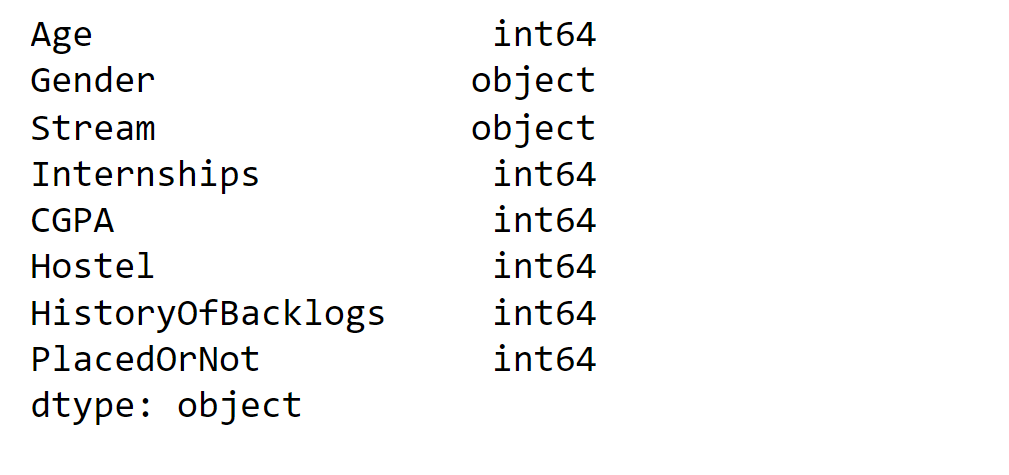
Output: 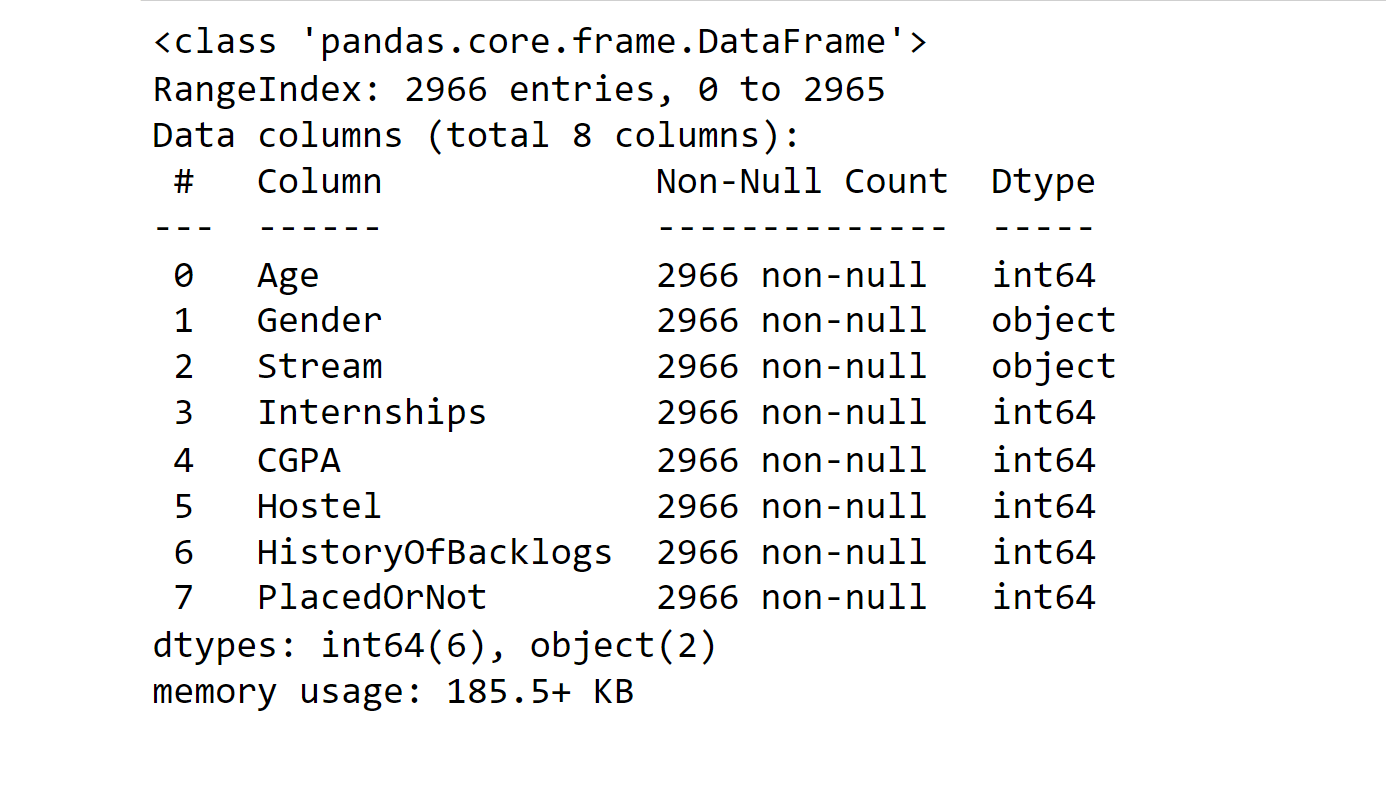
Output: 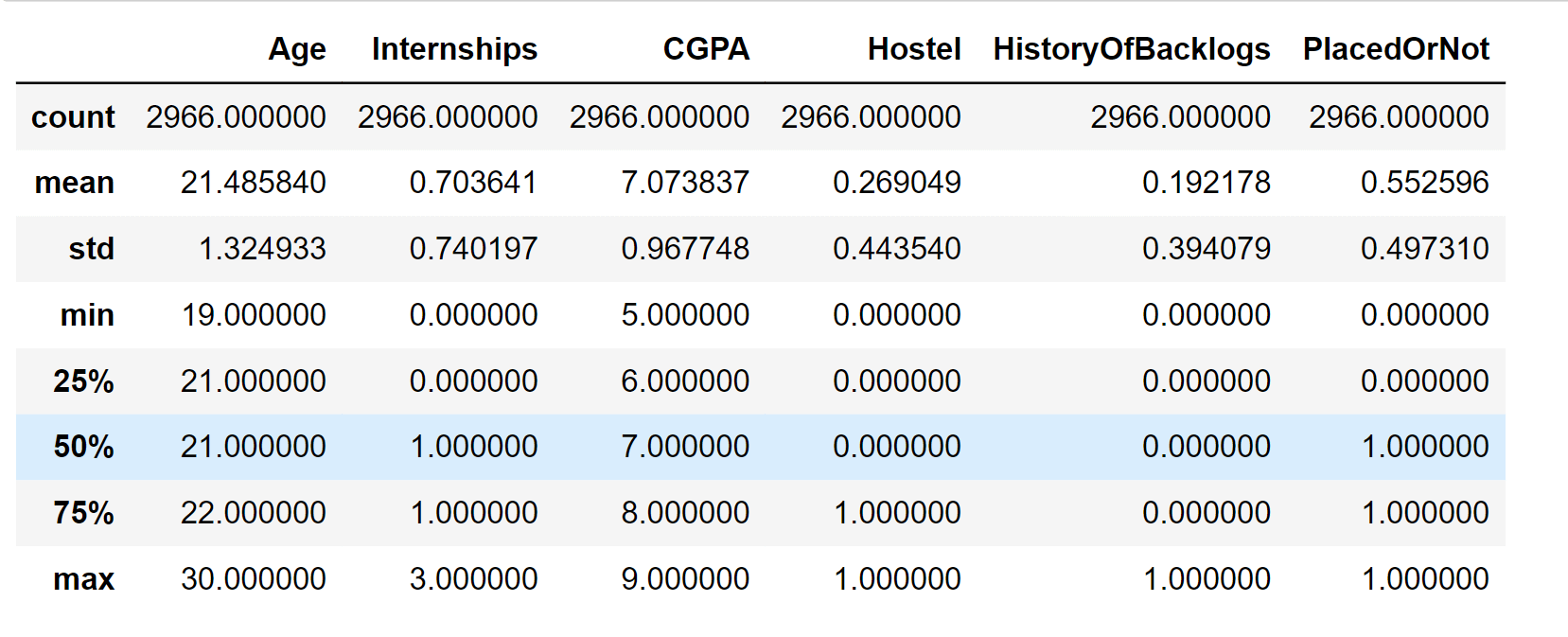
Output: 
PlacedOrNot is mostly correlated to the CGPA of the student. 3. PreprocessingPreprocessing is an important step in machine learning, which means having the data ready and clean before feeding it to the algorithm for learning. Preprocessing is the process of converting raw data into a format appropriate for analysis and modeling. Now, we will be checking if there are any missing or duplicate values in the dataset. Output: 
Output: 
Output: 
4. EDAExploratory data analysis is an important stage in machine learning, which involves examining and visualizing the data to learn more about its composition, traits, and trends. It is carried out prior to developing the actual machine learning model and is crucial for spotting possible difficulties and choosing the right preprocessing and feature engineering strategies. Output: 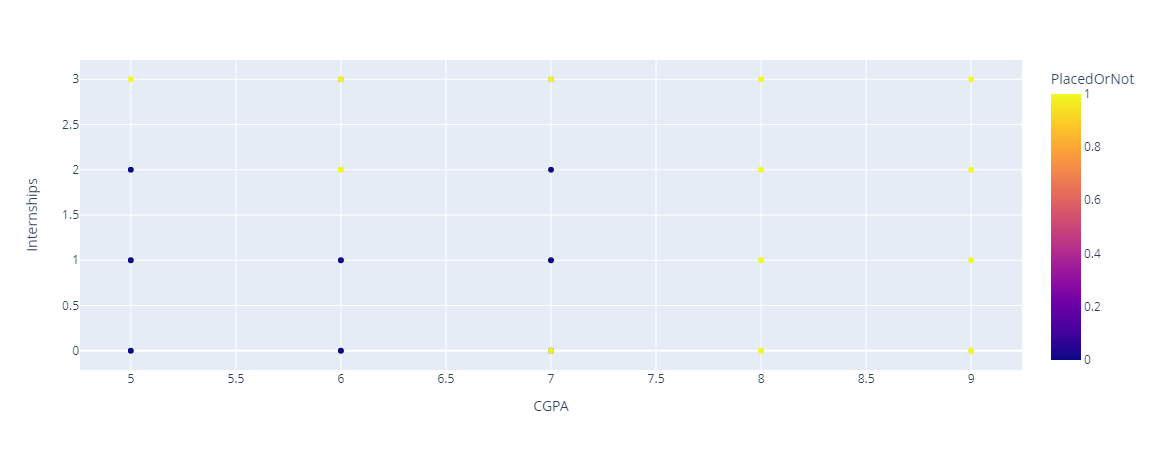
Output: 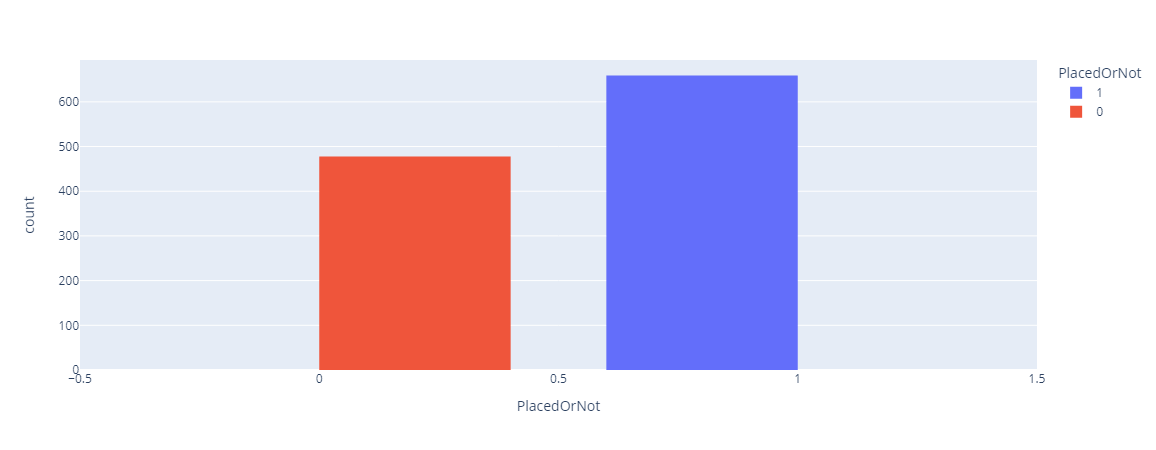
Output: 
Output: 
Output: 
Output: 
5. RepresentationThe process of statistical representation involves using statistical measures and visualizations to present data in a meaningful and understandable manner with the main objective of enabling the user to understand insights and patterns in the data and make well-informed decisions using the data. Output: 
Output: 
Output: 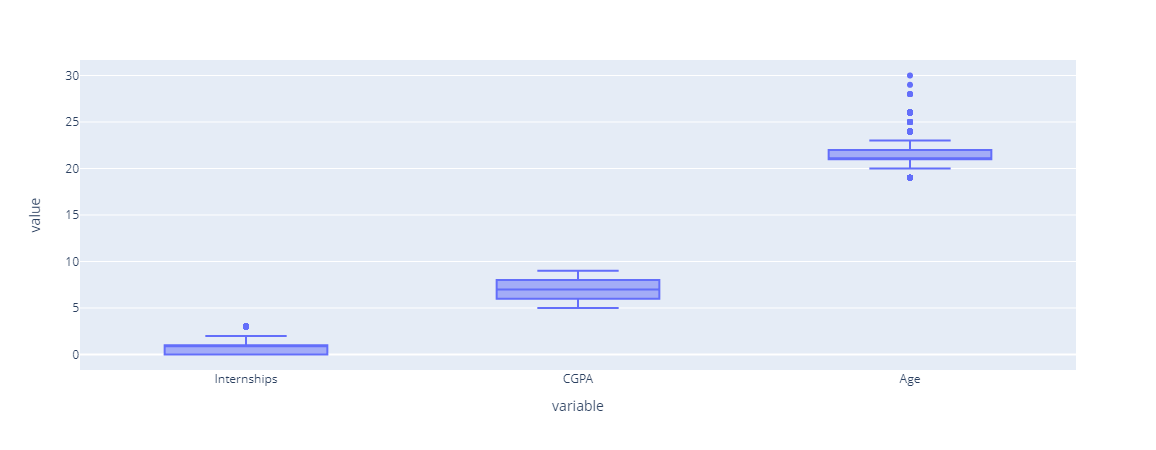
6. Encoding Categorical to NumericalIn machine learning, encoding categorical variables to numeric variables is a typical preprocessing step. It requires changing a qualitative attribute-representing category variable into a numerical variable that may be employed in mathematical operations and models. Output: 
Output: 
7. Extracting Input and Output ColumnsOutput: 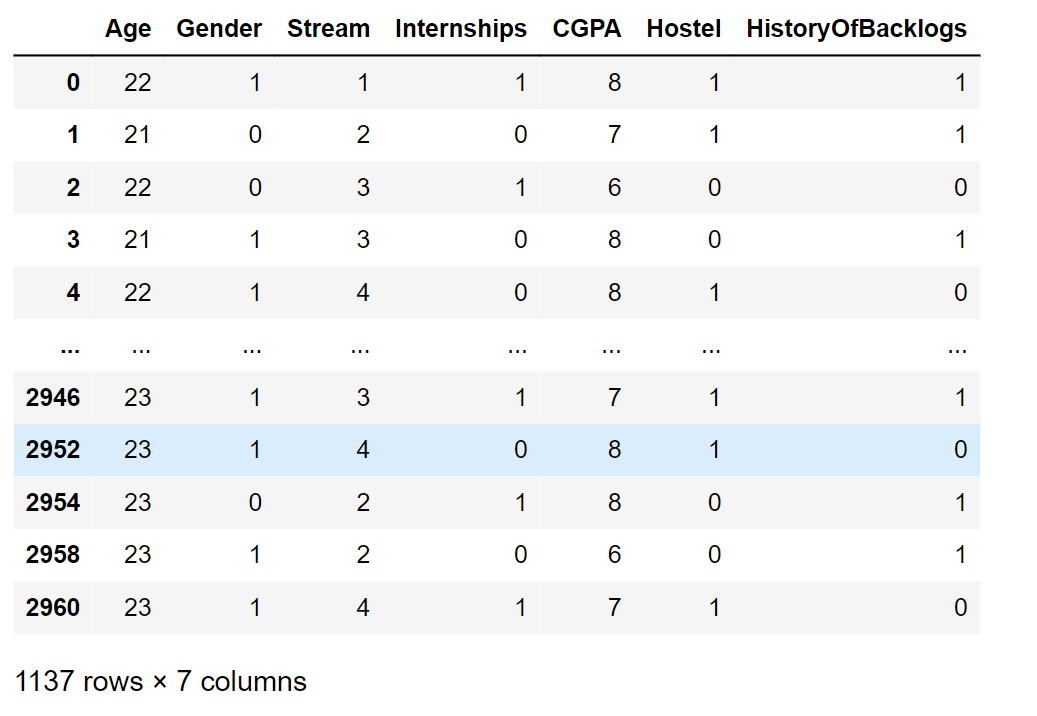
Output: 
Output: 
9. Scaling the Values10. Training & Evaluating the ModelTraining and evaluating the model are the two critical steps in machine learning that determine the accuracy and performance of the model. These steps require careful planning, attention to detail, and rigorous evaluation to develop a model that can generalize well to new, unseen data. Here will go with different machine learning algorithms and find their accuracy. 1. Logistic Regression Output: 
2. Decision Tree Classifier Output: 
3. Random Forest Classifier Output: 
4. Support Vector Machines Output: 
Output: 
5. Naive Bayes Output: 
Output: 
Output: 
Output: 
6. KNN Output: 
11. SGD Classifiers Output: 
Output: 
Output: 
So the best accuracy among the models is of Random Forest Classifier. Output: 
Using Hyper-Parameter tuning using GridsearchCV, Hypertune the parameters for Random forest and get the best parameters. Output: 
Output: 
The accuracy of the model with CV is 83%, and without CV is 80%. We can say that the accuracy of the model that we created is quite high. ConclusionThe likelihood that a student will be hired by a firm may be predicted using placement prediction utilizing machine learning techniques. The application of machine learning algorithms offers a more data-driven and objective approach to the hiring process, allowing businesses to find potential applicants who would have gone unnoticed using conventional hiring techniques. Machine learning is becoming more and more prevalent across a wide range of sectors, and placement prediction using machine learning algorithms is poised to become a crucial tool in the hiring process. |
 For Videos Join Our Youtube Channel: Join Now
For Videos Join Our Youtube Channel: Join Now
Feedback
- Send your Feedback to [email protected]
Help Others, Please Share









